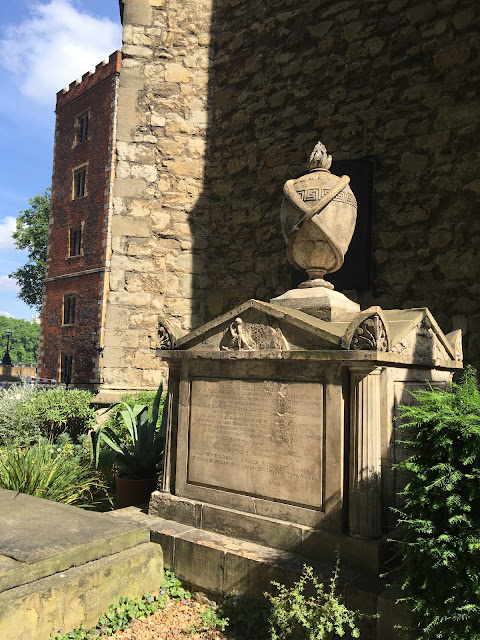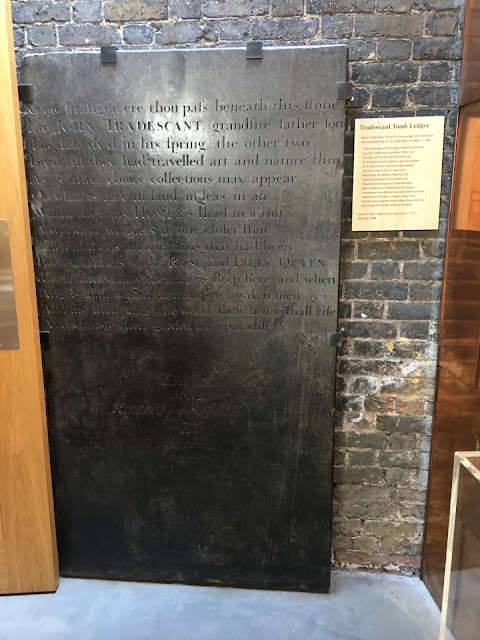Apologies for the late arrival of this post. Family crisis.
Wednesday and my first visit to the Garden Museum hard by Lambeth Palace, the London residence of the Archbishop of Canterbury. I walked from Waterloo Station, where people were gathering in their finery for a day at Ascot, along the Thames to Lambeth. I think that part of the embankment beside St Thomas Hospital is the finest bit of riverside we have in central London.
The Garden Museum is housed in the former church of St Mary-at-Lambeth - an ancient site. The tower is late medieval (c1370, when the rest of the church was rebuilt) but the body of the church is 19th century by Philip Hardwick, replacing a much more picturesque structure, which was, in fact until the 19th century a village church.* Both tower and church are built of Kentish Rag. The 'Buildings of England' volume on South London, however, says that the arcades and clearstory are medieval, but it all felt Victorian to me. The Historic England website says the nave and aisles are all 19th century and the Survey of London agrees. Either way the result of Hardwick's restoration is such that it would be very easy to dismiss the whole building as just another Victorian suburban church.**
That would be a mistake, as given its location St Mary's is, or was, another example of an Anglican establishment church. After all the church does contain the graves of some six archbishops of Canterbury, and members of their various households.*** Bishops Tunstall and Thirlby are also buried there, as is Admiral Bligh, the antiquary Elias Ashmole, and (most importantly for the subsequent history of the church) the Tradescant family. (The church is generally rich in monuments.) All that being so, it strikes me as odd, to say the least, that the church was allowed to become redundant (1972) in the first place and was scheduled for demolition. For four years church and churchyard fell into decay as it awaited its fate. Apparently they were to make way for a coach park for Waterloo Station. That surely can't be true, can it? Didn't the Church really not care about its patrimony? The answer to the latter question is probably 'no it did not', and that remains true today.
The church may not have cared, but Rosemary and John Nicholson did. In 1976 they visited the churchyard in search of the Tradescant Tomb. The scene of desolation they encountered galvanised them into action, and later that year it seems Lambeth council restored the graveyard. In 1978 the Tradescant Trust was founded with the aim of restoring the church as a 'Museum of the History of the Garden'. In 1981 the museum held its first exhibition, and two years later the Queen Mother opened the new garden - I think that was the now lost knot-garden designed for the museum by the Marchioness of Salisbury. The rest, so they say, is history.
* The village has been now largely swept away, to be replaced with commercial properties. The church and palace, and the former rectory and one side of Pratt St appear to be the only things left.
** I can't help that Hardwick, although faithful to the remaining parts of the Medieval structure, souped things up a bit - possibly heightening the nave and aisles and certainly increasingly the pitch of the roof. Late Medieval roofs are, as a rule, at a much lower pitch.
*** A cursory look at the List of Vicars shows that many were also domestic chaplains to the Archbishop and were destined for higher things - heads of Oxbridge colleges, deaneries, and bishoprics.












No comments:
Post a Comment